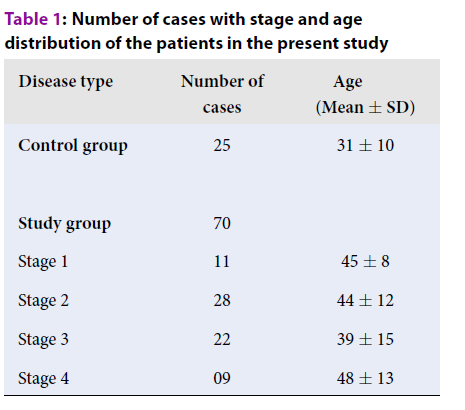Prognostic value of pre-treatment routine hematological parameters in breast carcinoma: Advantageous or deleterious?
DOI:
https://doi.org/10.15419/bmrat.v7i8.621Keywords:
Inflammation, NLR, PLR, Prognostic markersAbstract
Introduction: The most common malignancy which endangers the quality of life in females is breast cancer. It is also the major public problem in society and despite advances in treatment strategies, it still leads to high mortality. In all breast cancer patients, the first assessment done before surgery is the complete blood count (CBC). There exists a strong relationship between immune response of the body and clinical staging of breast cancer. This study aimed to determine the most reliable hematological markers for the prognosis of breast cancer, and to evaluate the correlation between hematological parameters and disease staging.
Methods: This study was a case control study conducted for a period of 3 years from Jan 2016 to December 2018 in the Department of Pathology (R.L. hospital and Research Center attached to Sri Devaraj Urs medical college, Tamaka, Kolar, Karnataka). The comparison of the hematological parameters was done between the study group (70 cases) and the control group (20 cases). The relation between the hematological parameters and the various stages of breast cancer was analyzed before initiating the treatment.
Results: The majority of the breast cancer patients were of stage 2. The hemoglobin concentration, red blood cell (RBC) count, lymphocyte count, and were reduced in the study group, with a significant difference (p < 0.05) when compared to the controls. Hemoglobin concentration, RBC count, hematocrit, white blood cell (WBC) count, and absolute lymphocyte count were inversely proportional to the stage of breast cancer. The absolute count, ratio (NLR), and platelet-to-lymphocyte ratio (PLR) were directly proportional to the progression of disease.
Conclusion: Hemoglobin, RBC count, WBC count (including differential count), NLR, and PLR are the key hematological indicators which predict the severity and mortality risk of breast carcinoma.

Downloads
Published
Issue
Section
License
Copyright The Author(s) 2017. This article is published with open access by BioMedPress. This article is distributed under the terms of the Creative Commons Attribution License (CC-BY 4.0) which permits any use, distribution, and reproduction in any medium, provided the original author(s) and the source are credited.
